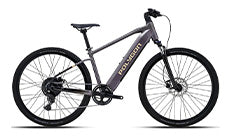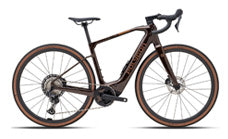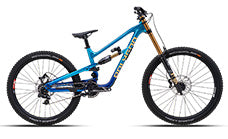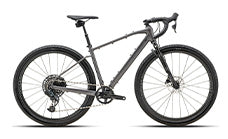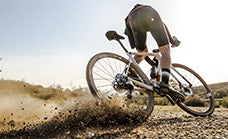Your ultimate guide to buying a bike helmet: Safety, fit, and features

If you’re looking to buy a new bike helmet, you might be overwhelmed by the choices available. From different types of helmets to various features and sizing, the options can seem endless. Don't worry, though! This buying guide will cover everything you need to know about how to choose the best bike helmet for your needs. We'll dive into helmet types, safety standards, ventilation, comfort, and much more. Ready to find your perfect match? Let's get started!
Understanding different types of helmets
When it comes to bike helmets, there are several types designed for different riding styles. Identifying your preferred type helps narrow down choices and ensures optimal performance and protection.
Road Helmets: These are designed for speed and aerodynamics. They are lightweight, have extensive venting, and typically cover less of the back of the head than other types. Ideal for road cycling, their streamlined shape reduces wind resistance.
Mountain Bike Helmets: Built for tougher terrain, these helmets usually feature better coverage, especially at the back of the head. Most include visors to protect against glare and debris. Ventilation is crucial since mountain biking can be strenuous.
Commuter Helmets: If you bike around town or commute to work, commuter helmets are tailored for urban environments. They often blend style with function, featuring fewer vents but added visibility elements like reflective strips and mounts for lights.
-
Road Helmets - Lightweight and aerodynamic
-
Mountain Bike Helmets - Extra coverage and visors
-
Commuter Helmets - Stylish and practical for city rides
Key features to consider
Selecting a bike helmet involves understanding critical features that enhance both safety and comfort. Here’s a breakdown of the key aspects to keep in mind during your search.
Safety Standards
The primary purpose of a helmet is to protect your head. Ensure any helmet you're considering meets recognized safety standards. Look for certifications like CPSC (Consumer Product Safety Commission) for the USA or CE EN1078 for Europe. These benchmarks indicate that the helmet has undergone rigorous testing.
Sizing and Fit
A properly fitting helmet significantly impacts its effectiveness. Manufacturers offer different sizes, from small to large, catering to various head circumferences. Always measure your head before purchasing. Place a measuring tape around the largest part of your head, typically an inch above your eyebrows, to get a precise measurement.
Adjustable Systems: Modern helmets come equipped with adjustable fitting systems like dial-adjusters or retention straps. These allow you to fine-tune the fit for maximum comfort and stability.
Ventilation
Good airflow not only keeps you cool on hot days but also prevents sweat build-up, making your ride more pleasant. Road helmets usually have numerous vents compared to commuter models. Check how the vents are positioned to ensure optimal air circulation.
Comfort and Padding
No one wants a helmet that feels like a chore to wear. Interior padding plays a significant role in comfort. Many helmets feature removable and washable liners, which are great for maintaining hygiene. Consider helmets with additional padding in areas that tend to feel pressure points, such as the forehead or crown.
Riding Style
Your riding style heavily influences the type of helmet you'll need. Do you prioritize speed and efficiency, or do you prefer rugged trails and adventure? Identify your primary riding habits to select the appropriate type and features that suit your activities.
Importance of the right fit
An essential aspect of choosing a bike helmet is ensuring it fits correctly. A poorly fitted helmet can compromise safety and comfort. Here’s a simple step-by-step guide to checking the fit:
-
Try the helmet on – It should sit level on your head, covering your forehead without tilting forward or backward.
-
Adjust the straps – Fasten the chin strap so it’s snug but not too tight. You should be able to fit two fingers between the strap and your chin.
-
Shake your head – The helmet should stay in place. If it wobbles or shifts, adjust the fitting system until it feels secure.
Remember, comfort and security go hand in hand. Taking the time to adjust and test the fit can make a huge difference in your riding experience.
Additional tips for helmet care
A good quality bike helmet is an investment you’ll want to keep in top condition. Proper maintenance not only extends its lifespan but also ensures continuous safety performance. Here are some tips for taking care of your helmet:
-
Regular Inspections: Periodically check for cracks, dents, or any signs of wear. Even minor damage can reduce a helmet's protective capability.
-
Cleaning: Use mild soap and water to clean the exterior and interior pads. Avoid using harsh chemicals or solvents that may degrade the materials.
-
Storage: Store your helmet in a cool, dry place away from direct sunlight. High temperatures can warp and weaken the material.
-
Replacement: Replace your helmet every 3-5 years, or sooner if it has been involved in an accident. The materials can degrade over time, reducing effectiveness.
Common questions about bike helmets
What is the most important feature of a bike helmet?
The most important feature of a bike helmet is its safety certification. Without it, you cannot be sure the helmet will provide adequate protection. Make sure any helmet you consider has the right certification for your region.
How do I choose the right size bike helmet?
Choosing the right size involves measuring your head circumference. Use a measuring tape to wrap around the largest part of your head, then compare this measurement to the helmet sizing chart provided by the manufacturer. Adjustable fittings like dials and straps help achieve a snug fit.
Can I use a skateboard helmet for biking?
Skateboard helmets are designed differently and might not offer the same level of protection needed for biking. If the helmet is dual-certified for both skateboarding and biking, it could be used safely. However, it's always best to use a helmet specifically designed for your activity for optimal safety.


